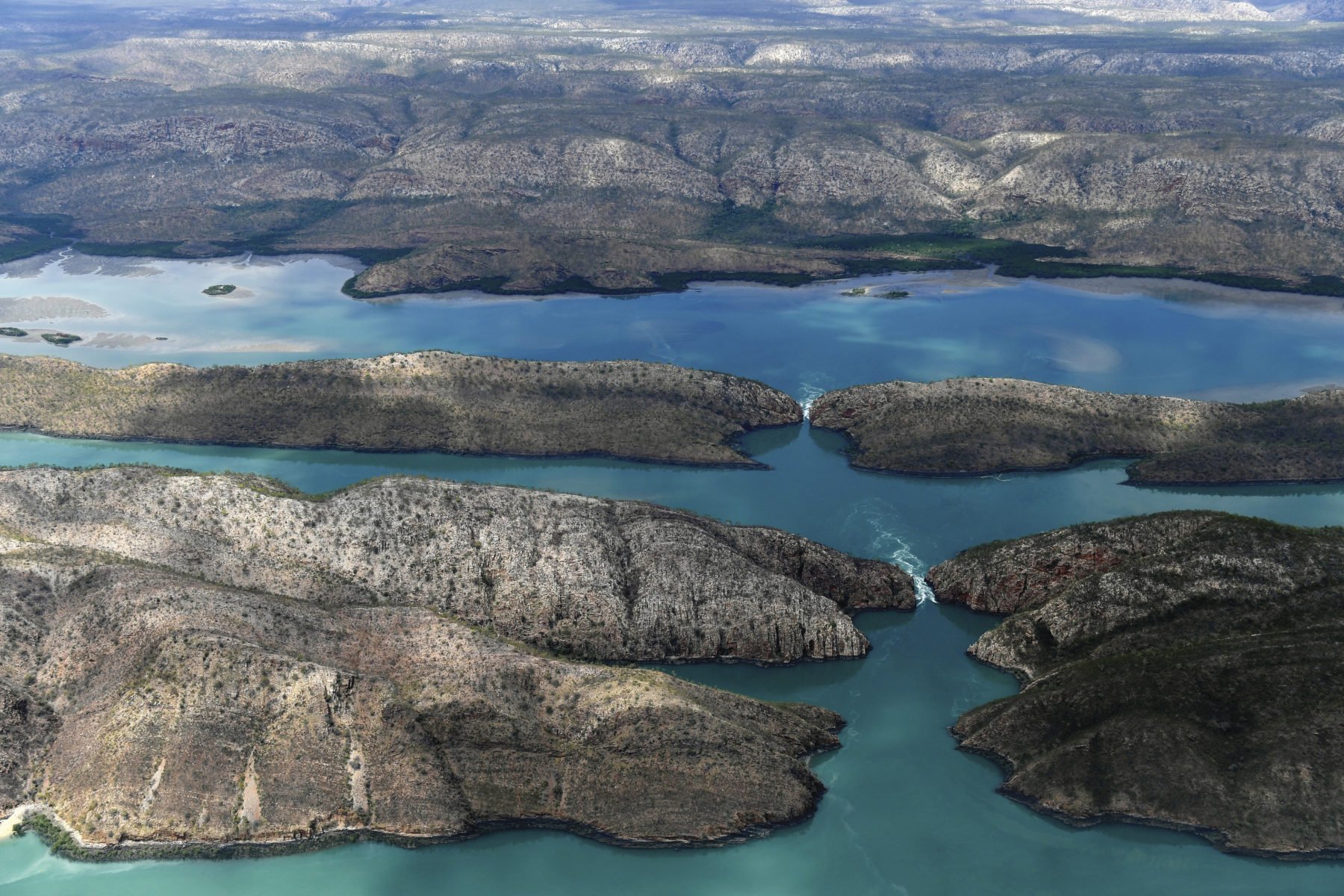Travel the Kimberley Coast

For nearly 500 years outsiders have sailed the Kimberley coast – first European explorers and Macassan fishers, then pearlers, pastoralists, missionaries, and finally tourists. They have all probed the discombobulating geography of its bays, harbours and sounds, or gingerly threaded a labyrinthine scattering of about 3000 islands caught in the daily sluice of the region’s huge tides. These outsiders found a land where the only agents of change were the stresses and strains of the Earth itself.
To cruise this 1200km-long coast today is to appreciate a landscape much as the first human arrivals saw it when they stranded on an unknown beach more than 45,000 years ago. Their fragile watercraft rode the same dazzling azure waters as the expedition cruise vessels of today. And still arrayed before the coast’s recent visitors are the rust-red and water-stained bluffs of
billion-year-old sandstone that became a major threshold to the first continent-wide human occupation.
Reminders of the presence of those early residents are still easily accessible today in the rock-art galleries at Vansittart and Swift bays. Here, monochrome figures, often called Gwion Gwion, appear like shadows on stone. As stains from the iron-rich ochres used by ancient artists, they have endured in rock shelters for perhaps 25,000 years. Graceful, and sometimes ornately garbed with tassles or sashes, these animated figures hunt and dance. They are an enigmatic expression of a proud people. Half-closing one’s eyes and gazing across the landscape, the Gwion people could almost appear in the distance, returning from a successful hunt.
The Kimberley is essentially stone country, with deep gorges incised through an uplifted plateau over millions of years of erosion. For a ready glimpse of the Kimberley’s wild heart, travel from the drowned valley of St George Basin along the course of the Prince Regent River. An hour’s fast boat ride from the river mouth, and almost hidden on its southern bank, King Cascades tumbles over stone terraces, its cool waters splashing into a mangrove-fringed pool below. And there enters the saltwater crocodile – a stealthy denizen of the silt-laden tidal reaches of the river. Perhaps you see it, now you don’t – a dangerous presence on all the Kimberley’s rivers within reach of the sea.
It was at the cascades that Phillip Parker King filled his water casks during a 19th-century exploration. At Careening Bay he left an inscription on a tree after his ship was dragged ashore by the crew for repairs. More than 200 years on, the deeply carved words HMC MERMAID 1820 are still legible on a boab – an icon of the Kimberley.
Only readily reached from the sea, these are but the smallest sample of the wonders of this place – nature unspoilt and a human presence almost as old as humanity itself. As one of the longest undefiled coastlines anywhere on Earth, the seaward face of the Kimberley is indeed a precious, and an increasingly rare, sight.

You won’t want to miss
Mitchell Falls
Also known as Punamii-Uunpuu to the Wunambal people, the falls were carved through sandstone by the waters of the Mitchell River, producing layers of mesmerising emerald water pools from which the waters tumble one to the next.
Horizontal Falls
Twin gaps within the McLarty Range create the amazing Horizontal Falls (right) when massive tides make water bank up. See this spectacle from a charter flight, and then on a speedboat.
Bigge Island
Just 6km from the mainland, this stunning island is the second largest in the Bonaparte Archipelago. Sea caves harbour contact art and you might spot a monjon, our smallest rock-wallaby.
King George Falls
During and just after the Wet the King George River thunders down more than 80m of sandstone cliffs. Year-round there is a spectacular view to be had from the top after a steep climb up a tricky track.
Sailing the Kimberley Coast
See the Kimberley’s raw, rugged coastline from the deck of a small ship. Kimberley expedition pioneers, Coral Expeditions, have perfected their itineraries over 25 years. Join their expert team and explore the Kimberley coast between Broome and Darwin on an unforgettable 10-day expedition cruise through an ancient landscape, where nature takes centre stage and Indigenous connections and exploration history abound.
Visit: coralexpeditions.com/au/destinations/the-kimberley/

